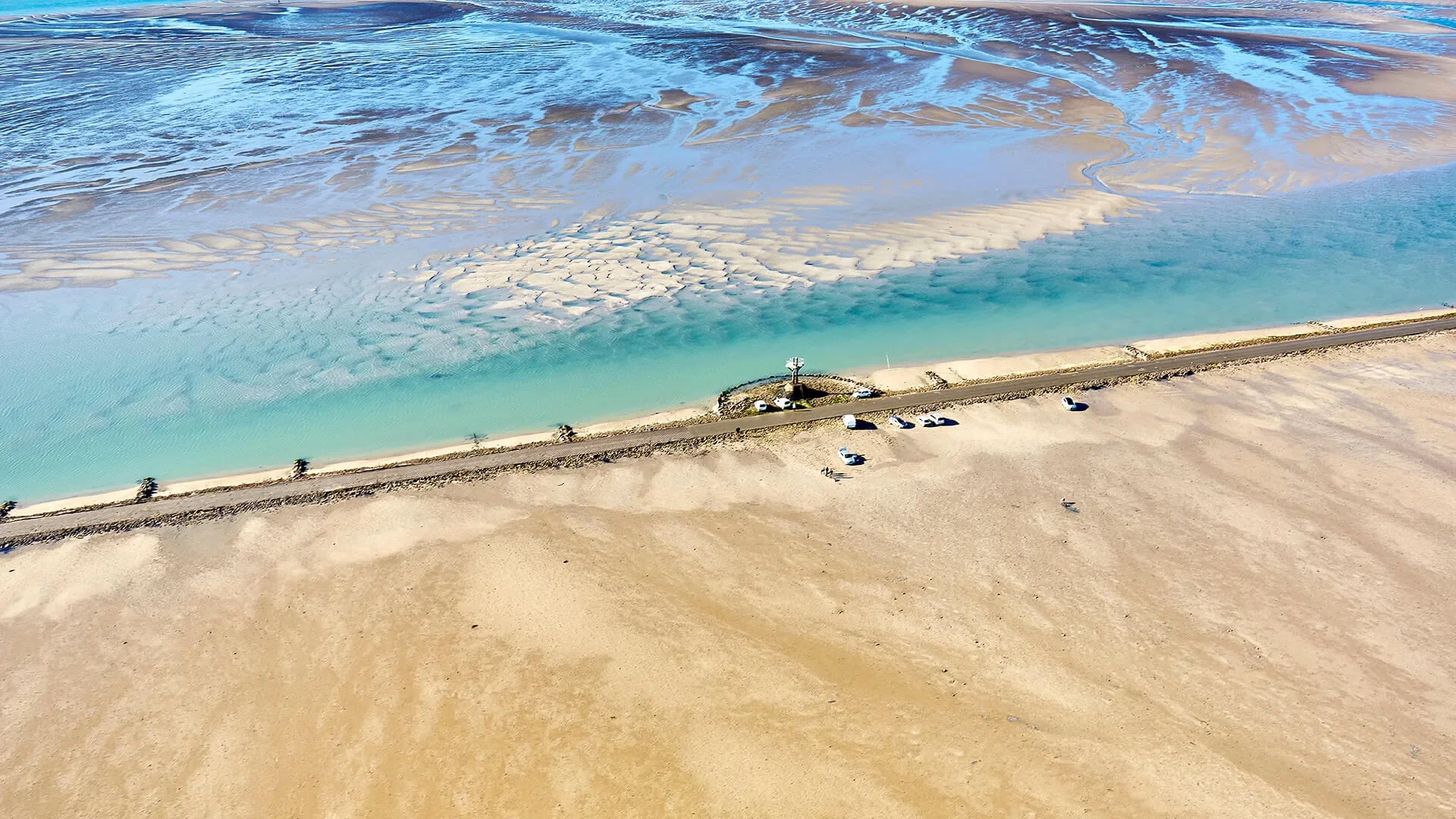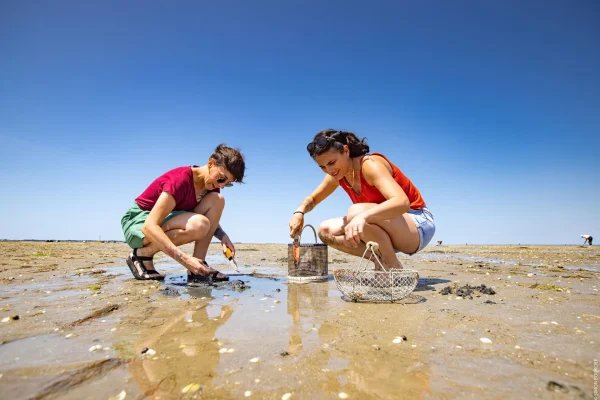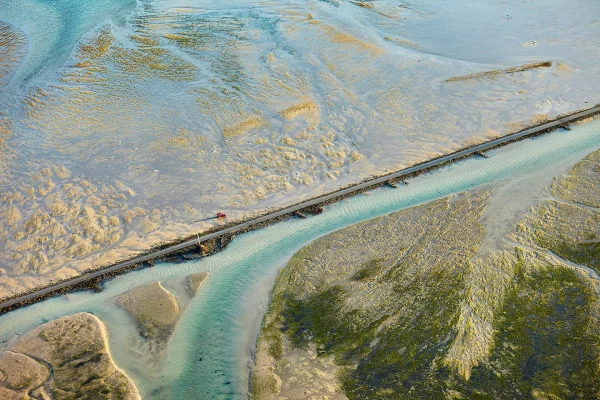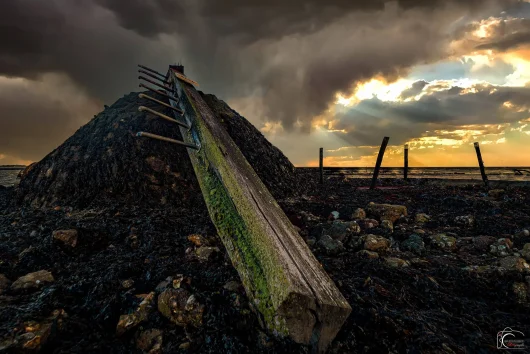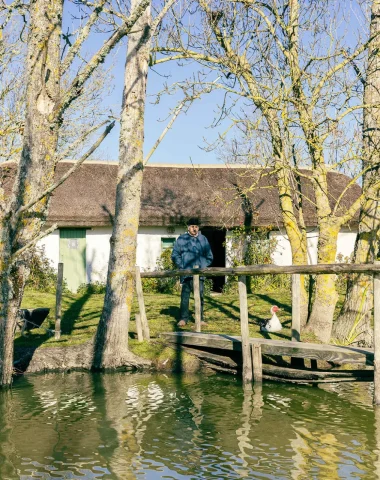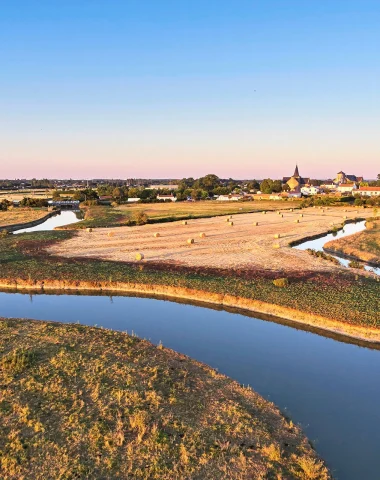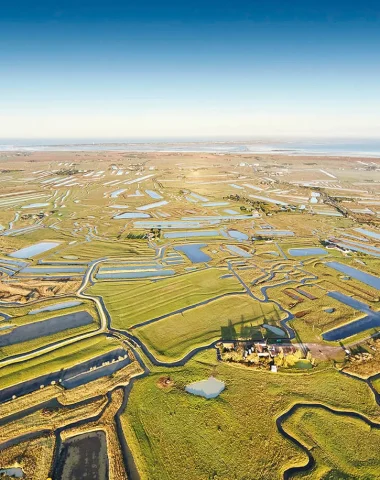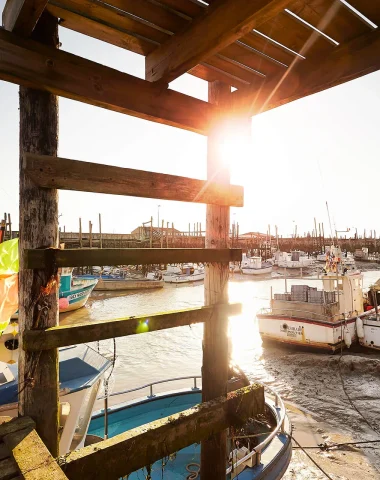
The Passage du Gois: A mythical and unmissable route
This submersible road, linking Beauvoir-sur-Mer to the Ile de Noirmoutier, is uncovered twice a day, allowing it to be crossed. At low tide, this unusual and emblematic passageway is revealed to anglers and walkers who come to enjoy the magnificent panorama.
Unique in the world for its length (over 4 km!), the Passage du Gois is the result of the meeting of two opposing ocean currents, causing a slow rise in the ocean floor. It's an unforgettable sight, after which the Gois disappears under the water until the next low tide.
From the top of the emblematic beacons, which serve as a refuge for the unwary and the distracted, the view is breathtaking over the Bourgneuf Bay.
Le Passage du Gois
A little history
The first known crossing of the Passage du Gois dates back to 843. Prisoners managed to escape from the Ile d'Her (now the Ile de Noirmoutier) and return to the mainland on foot after the sea had receded!
In the 18th century, the Gois (from the patois "goiser" meaning "to get one's feet wet by walking in water") is mainly used for crossings on foot and by animals. At the time, however, this submersible route was much longer because the island's coasts and the mainland were further apart.
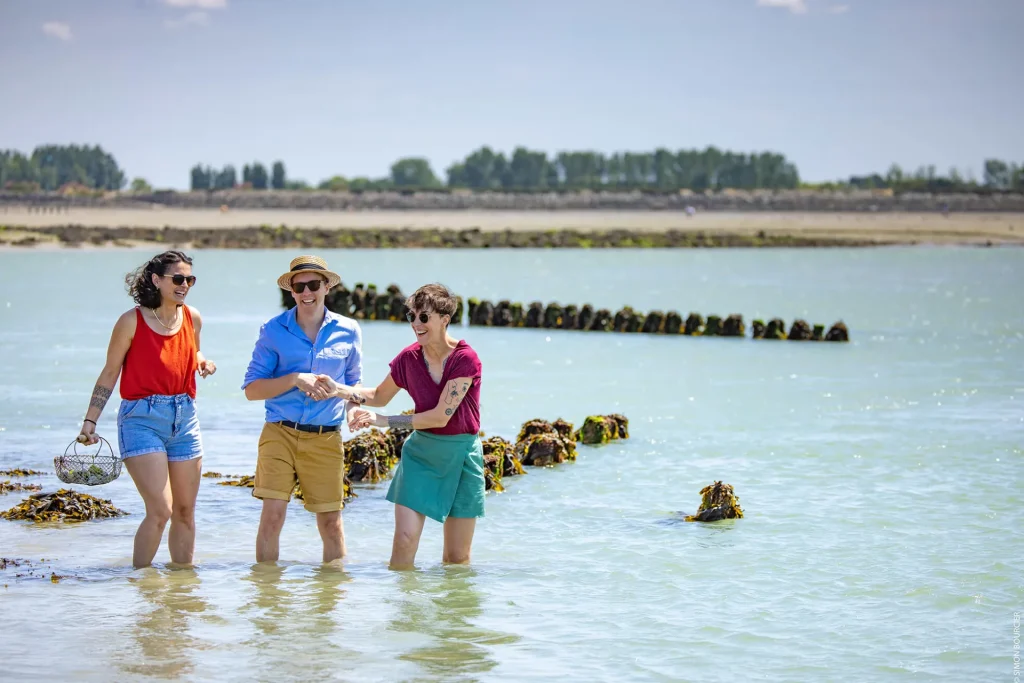
The Gois and its outbuildings (causeway, dykes and refuges) have been listed as Historic Monuments since 11 July 1942.
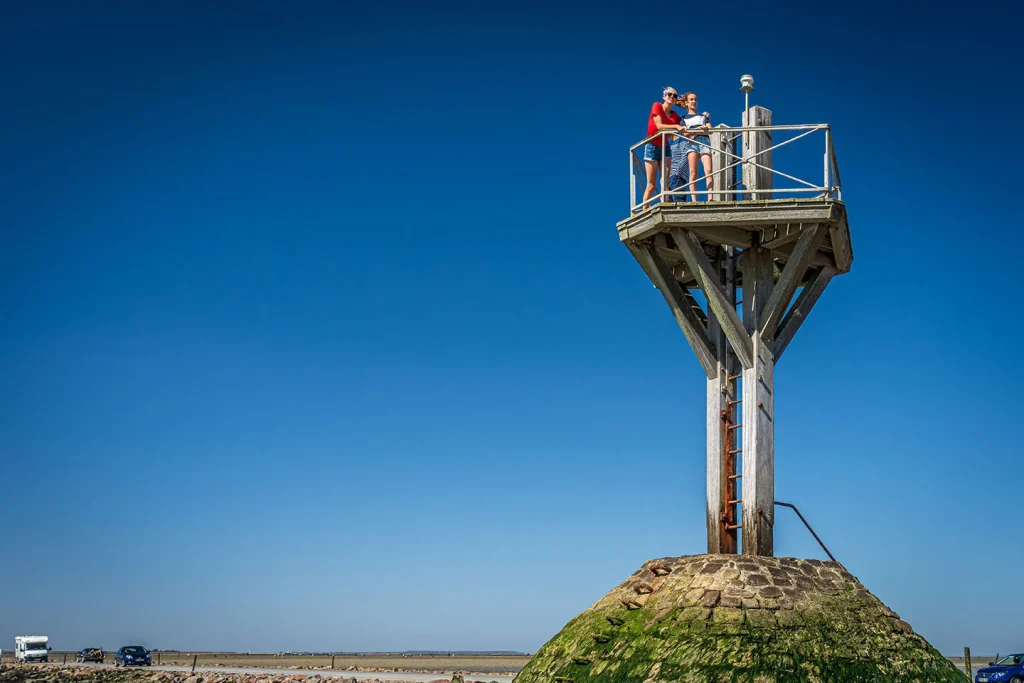
The first wooden beacons marking the route were installed around 1780, followed by stabilisation work to prevent the sandbanks from shifting. Around 1840, a regular service was provided by horse-drawn carriage. Stoned in 1868, the Passage du Gois was consolidated, signposted and repaved around 1924. The roadway was paved and refuge markers were built around ten years later, completing the transformation of the original ford into an access route to the island and the oyster beds. Marker posts were planted every hundred metres. Six "parrot mast" markers and three markers equipped with cages offered shelter to walkers surprised by rising water.
Highlights
Les Foulées du Gois
An emblematic event since 1987, it is a celebration of sport, local culture and friendship.
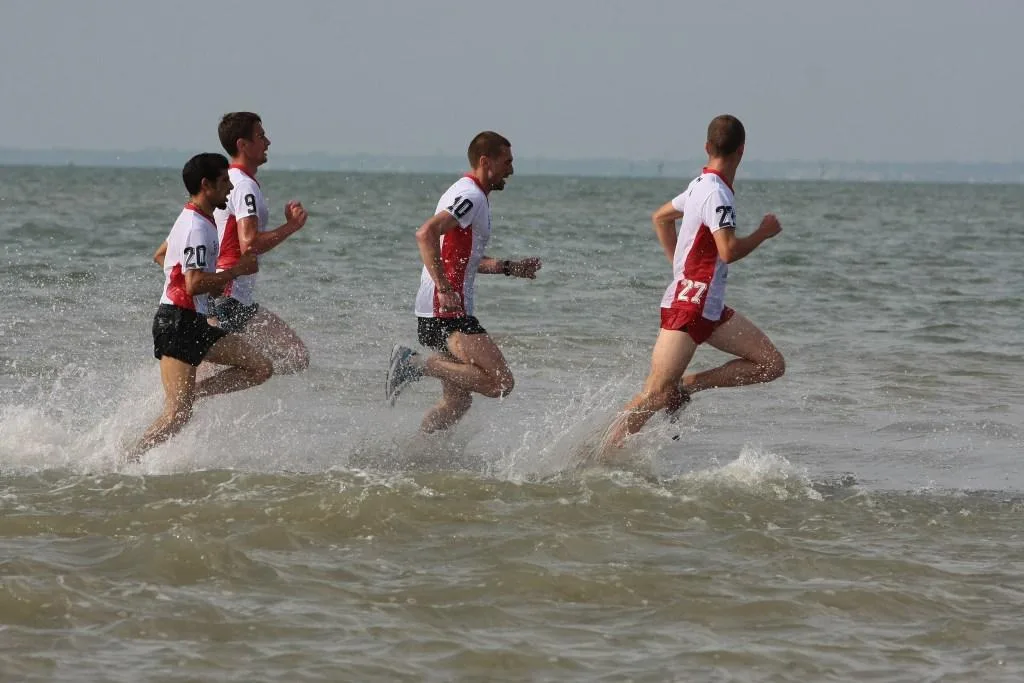
The Gois is the scene of a "race against the sea". To round off the day, the elite competitors face the sea as the tide rises. Some competitors arrive on the other shore with water up to their knees. They have to combine endurance and speed over more than 4km to avoid being trapped by the rising water. This spectacular race brings together more than 20 nations, who do themselves the honour of presenting their best athletes.
Every year, there are more and more spectators and runners, both children and adults. "Les Foulées du Gois is an internationally renowned sporting event!
